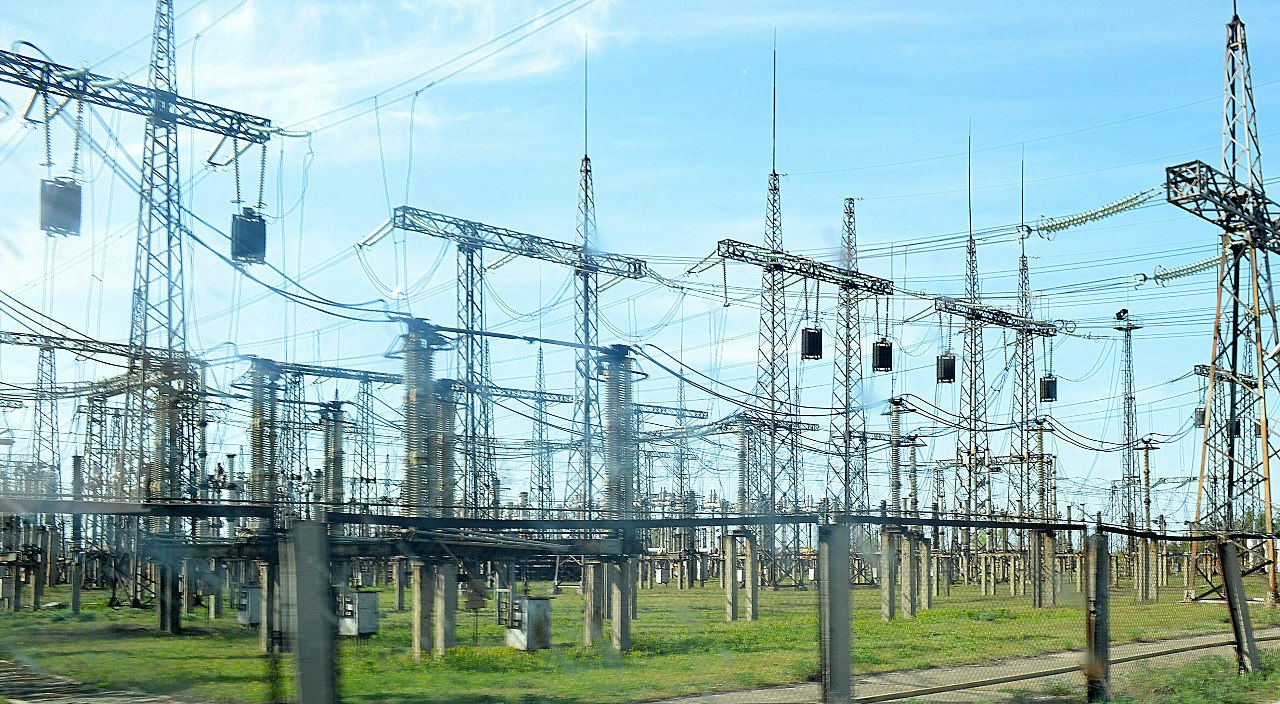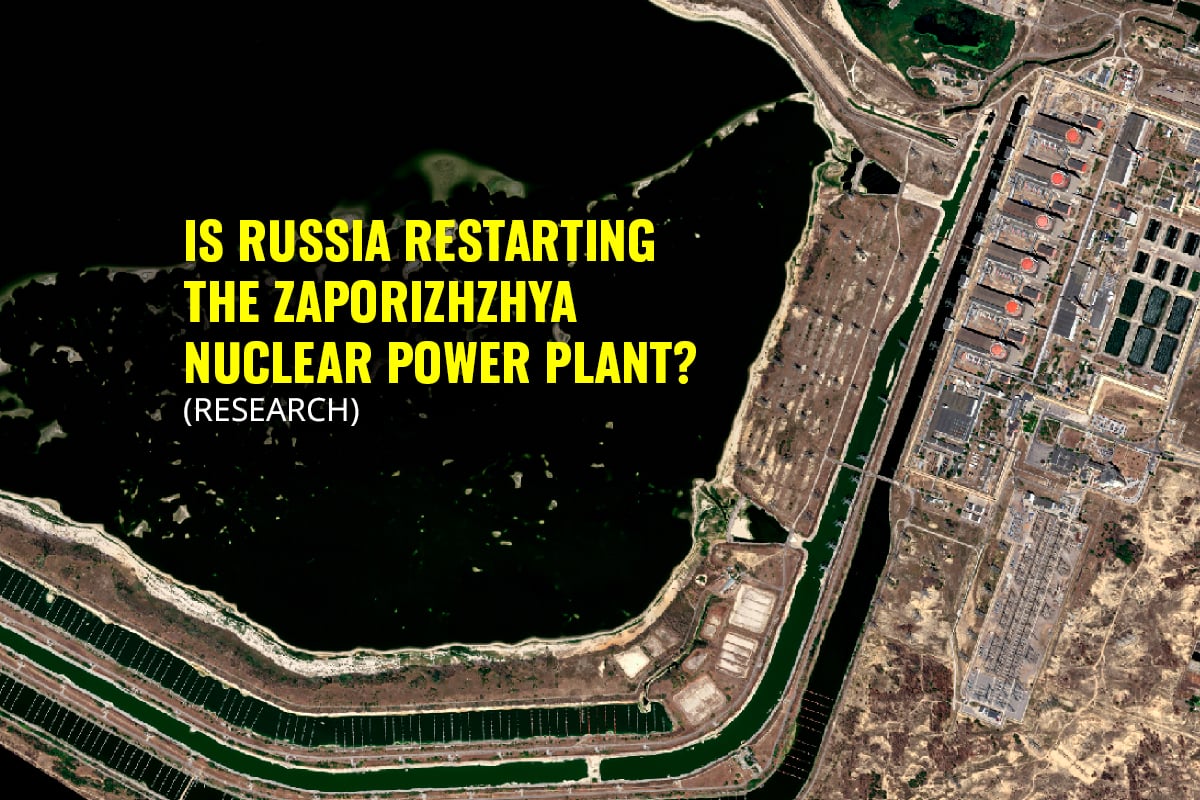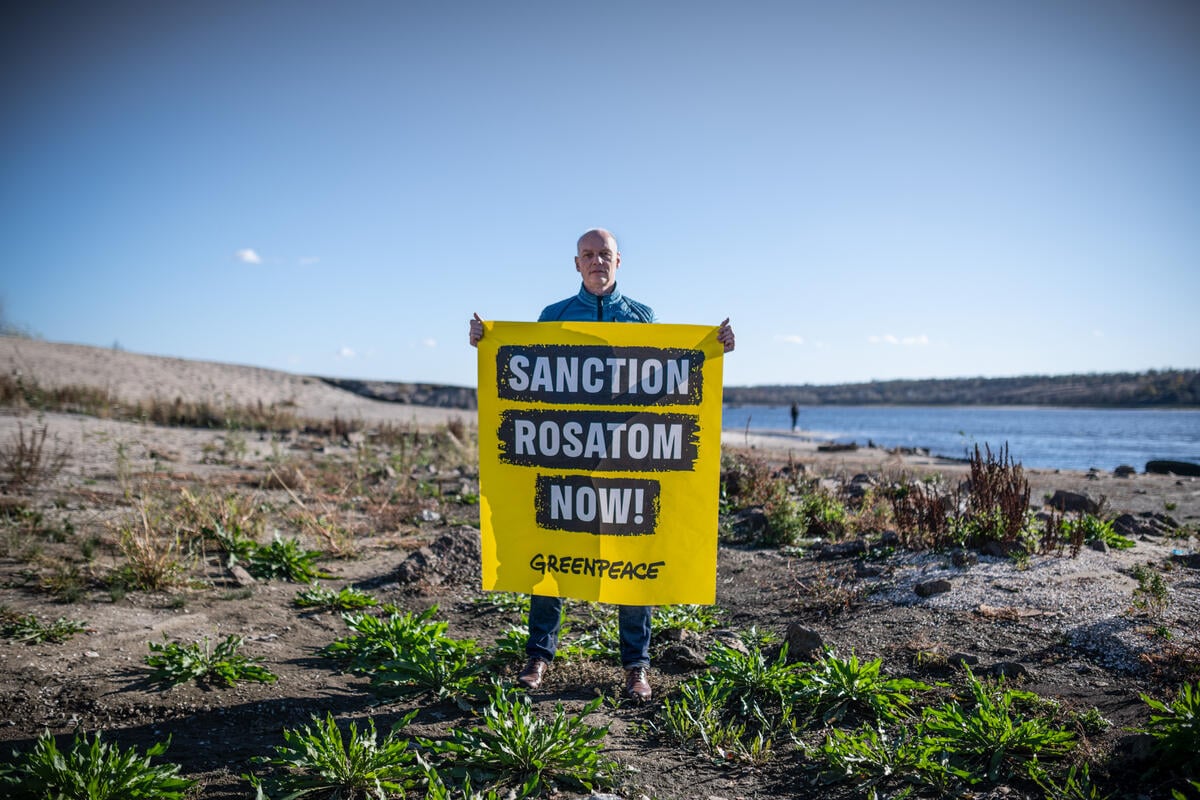Occupation poses a permanent threat of nuclear disaster for Ukraine and Europe
13 August 2025, Kyiv
“All Russian military forces and personnel from Rosatom must be removed from the Zaporizhzhia Nuclear Power Plant”, Greenpeace Ukraine warned in advance of the meeting between U.S. President Trump and Russian President Putin in Alaska scheduled for Friday, August 15th.
“As European Union leaders have recently restated, Ukraine’s sovereignty and territorial integrity must be respected.(2) International law and the United Nations Charter require it. To meet those obligations the international community must secure the return of the Zaporizhzhia nuclear plant to Ukraine. There are no legitimate conditions in any future agreement in which Rosatom and the Putin regime are permitted to retain control of the Zaporizhzhia nuclear plant. It would give the Russian regime the option at any time to threaten a nuclear disaster on Ukraine and Europe. All efforts must be made by Ukraine’s allies to prevent this nightmare nuclear scenario from being realized,” said Shaun Burnie, senior nuclear specialist at Greenpeace Ukraine.
Russian armed forces attacked Ukraine’s largest nuclear power plant in March 2022 and together with Rosatom have been illegally occupying it ever since. The consequences have been severe in terms of increasing nuclear hazards. In June 2025, Russian plans for restarting the reactors were presented by Rosatom director Likhachev to Rafael Grossi the Director General of the International Atomic Energy Agency (IAEA).(1)
Since 2022, the nuclear plant has suffered nine complete losses of offsite power, so called LOOP. Electricity power lines have been damaged due to Russian shelling and missile strikes on Ukraine’s electric grid. Since May 2025, only one external power line has been functioning.(3) Without reliable and stable electricity supply the plant is at risk of losing power for essential cooling of the nuclear reactor cores and spent fuel. If Rosatom succeeds in its plans to restart the reactors, safety margins will be dramatically lower even than today. A station blackout with loss of all electrical power, including emergency generators, in a matter of a few hours would lead to a nuclear fuel meltdown with enormous consequences for Ukraine and Europe.
In late May 2025, evidence of Russian plans for restart were revealed when satellite imagery showed the construction of electricity pylons in temporarily occupied Zaporizhzhia and Donetsk regions.(4) The imagery showed pylons being installed between Melitopol and Mariupol. “Despite Rosatom’s role in the criminal act of stealing Europe’s largest nuclear plant, there has been effectively no punishment, no sanctions. The global nuclear industry has continued to trade and cooperate with Russia. The Kremlin considers its attack and occupation of the Zaporizhzhia nuclear plant as a strategic masterstroke. That has to change. The international community must turn Russia’s illegal occupation of the Zaporizhzhia nuclear plant into a nightmare for Russia and through economic, political, diplomatic and other levers force the Russian de-occupation of the Zaporizhzhia nuclear plant and out of Ukraine,” said Burnie.
Notes
- Meeting in Kaliningrad, 6 June 2025, Likhachev spoke about water supply for Zaporizhia NPP, RIA Novosti, see https://ria.ru/20250606/zaes-2021343975.html. Likhachev also informed IAEA DG Grossi that they have begun construction of a floating modular pumping station with a capacity of up to 18 thousand cubic meters per hour, which will solve all water supply problems if the units reach their design capacity, he said.
- European Union Leaders’ Statement on Ukraine, 12 August 2025, see https://www.consilium.europa.eu/en/press/press-releases/2025/08/12/statement-by-european-union-leaders-on-ukraine/
- Ukraine Foreign Ministry, Communication from the Permanent Mission of Ukraine to the Agency, 7 July 2025, www.iaea.org/sites/default/files/publications/documents/infcircs/2025/infcirc1302.pdf ; and IAEA, Update 301 – IAEA Director General Statement on Situation in Ukraine, 10 July 2025, see https://www.iaea.org/newscenter/pressreleases/update-301-iaea-director-general-statement-on-situation-in-ukraine
- Greenpeace Ukraine, Location of illegal Russian construction of new electricity line for Zaporizhzhia nuclear plant – as Rosatom chief tells Russian politicians he is “living the dream of restart”, 27 May 2025, see https://www.greenpeace.org/ukraine/en/news/3658/location-of-illegal-russian-construction-of-new-electricity-line-for-zaporizhzhia-nuclear-plant-as-rosatom-chief-tells-russian-politicians-he-is-living-the-dream-of-restart/



